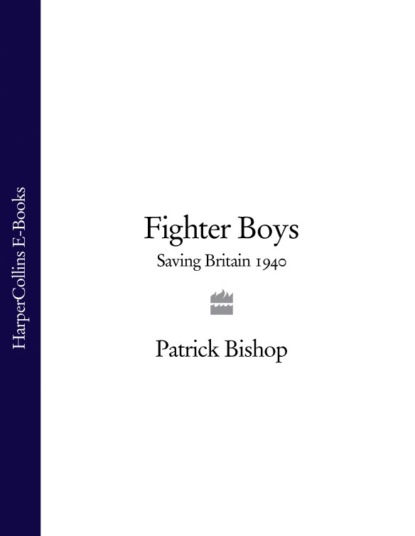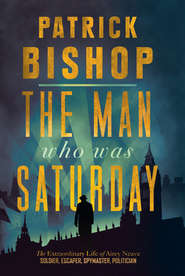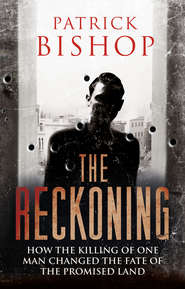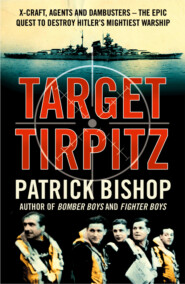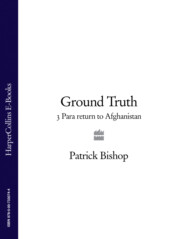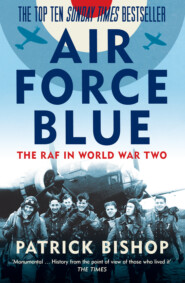По всем вопросам обращайтесь на: info@litportal.ru
(©) 2003-2024.
✖
Fighter Boys: Saving Britain 1940
Настройки чтения
Размер шрифта
Высота строк
Поля
(#litres_trial_promo)
Being a good sport was the essential quality in fitting in. Taken literally, it meant that athletic ability would count in a pilot’s favour, a factor which benefited the outdoorsy arrivals from the Empire. Deere found that ‘the natural reserve of all Englishmen gave way to a more friendly approach’ after a game of rugby in which New Zealanders took on the rest, beating the English pilots by a colossal score. He was a boxer who had taken part in the New Zealand amateur championships. He was reluctant to don the gloves again, but was persuaded to do so by a senior officer who advised him it would be good for his career. The abbreviation of a first name, the bestowal of a nickname, signalled you were in. Alan quickly became Al.
Being a good sport, however, went beyond the observance of the conventions, attitudes and observances of middle-class males of the time. A mood of tolerance prevailed so that individuality, even eccentricity, was prized. The business of aerial warfare meant that the type of military discipline applied to soldiers and sailors was not appropriate for airmen. Junior officers addressed their squadron superiors as ‘sir’ on the initial meeting of the day. After that it was first names. Once in combat in the air, everyone was essentially on their own and beyond the orders of a commander. Good pilots, anyway, succeeded by initiative and making their own decisions.
From the earliest days on the Western Front, pilots took a relaxed view of military conventions and often displayed a sceptical attitude towards senior officers, though seldom with their own immediate commanders if they had earned their respect. Pomposity was ruthlessly punished and shyness discouraged. Coy newcomers learned that a certain amount of leg-pulling and practical joking was the price of belonging. Deere, like all new arrivals, spent his first few weeks at 54 Squadron at Hornchurch doing dogsbody tasks like overseeing the pay and clothing parades. He was also required to check the navigation inventory and found to his concern that an item called the Oxometer was missing. On informing his flight commander, he was told that this was a very serious matter and the station commander might have to be notified if it was not found. It was some days before he ‘realized that no such item of equipment existed and that it was a trick played on all new pilots and one in which everyone from the station commander down participated’.
(#litres_trial_promo) The joke took on a further refinement when a particularly earnest pilot officer was told that the missing Oxometer had been found. A fake instrument was rigged up and the relieved officer invited to blow in it to check it was working, which resulted in him being sprayed with soot.
The boisterous and extrovert tone of squadron life disguised a level of consideration and fellow feeling that perhaps marked out the RAF from the other services. The testimony of survivors, and what little was written down by those who died, is imbued with an overwhelming affection for fellow pilots and for the units in which they served. The camaraderie that came with membership of a fighter squadron appears to have provided a degree of spiritual sustenance, augmenting the warmth of an absent family or making those with dislocated backgrounds feel they had arrived at a place where they belonged. The simple cheeriness that was the Fighter Boys’ chosen style masked some complicated stories. Geoffrey Page’s parents were separated. His father frightened him and he resented his miserly attitude toward his mother. Dennis David was brought up by his mother after his father, who drank and had financial troubles, abandoned the family when he was eight. Brian Kingcome’s mother had returned to England with her children, leaving her husband to continue working in India. He returned only once every two and a half years. As Kingcome was at boarding school, he barely saw his son during his childhood and adolescence.
The modern assumption is that such experiences must leave a mark. Feeling sorry for oneself lay outside the range of emotions allowed to adolescents in Britain in the 1930s. Kingcome admired and respected his largely absent father. Paddy Barthropp’s mother died in childbirth, a tragedy that meant his father ‘resented my very existence almost up to the time of his own death in 1953. I never blamed him.’ At Ampleforth one day in 1936 ‘a school bully approached me to say that it would be a good idea if I read page four of The Times in the school library. There it was for all to see – “In the High Court of Bankruptcy, Elton Peter Maxwell D’Arley Barthropp”…the fact that one was skint was not acceptable and carried a long-lasting social stigma…the next few days were the most embarrassing of my life.’ He was farmed out to a step-grandfather, ‘extremely rich and very nasty’, among whose many possessions was the Gresford Colliery near Wrexham. On hearing that there had been a disaster at the mine killing 264 miners, the old man ‘replied that he didn’t want to be disturbed. He disgusted me.’
(#litres_trial_promo) Barthropp eventually got an apprenticeship with Rover Cars in Coventry before deciding to join the RAF after a visit to the Hendon Air Display.
Barthropp was hopeless academically. He failed the school certificate five times, and only scraped through his RAF board by gaining ‘a phoney pass’ from a crammer. Roland Beamont also failed his school certificate and had to resort to coaching to get the qualification he needed to be eligible for a short-service commission. Denys Gillam, who joined the RAF on a short-service commission in 1935, had been kicked out of his prep school, then his public school, Wrekin College, for drinking and exam irregularities. He later joined 616 Squadron and commanded two fighter squadrons. Against the wisdom of the pre-war days his preferred pilots were ‘non-athletic men between the ages of eighteen to twenty-three’, who had ‘better resilience to stress than the successful rugger player or his equivalent…all the best pilots that I knew tended to be rather weedy, though there were exceptions. The best pilot were ones that hadn’t had much success in other spheres and were determined to succeed.’ Teaching a course to a class of wing commanders later in his career, he discovered that ‘out of a group of twelve…four had been thrown out of their school before they left. This was, I think, fairly typical.’
(#litres_trial_promo) Kingcome was to deliver the opinion later that, ‘Fortunately for us, and, I believe, for the RAF in that generation, there were [no]…psychological and aptitude tests, which would have failed a majority of candidates for short-service and permanent commissions and I suspect might have cost us the Battle of Britain.’
(#litres_trial_promo)
Expansion increased the flow of men from the lower reaches of the RAF into the ranks of the fliers as candidates were selected from among the ground crews to serve as sergeant pilots. Of the 2,500 pilots originally sought to man the new aircraft and squadrons, 800 were found from among those already serving as aircraftmen or non-commissioned officers. The RAF apprentice schemes allowed a trickle of fitters, riggers and other tradesmen to receive flying training, on the understanding that they would return to their trades after five years. There were also two places set aside for the top performers at Halton to go on to Cranwell to take up a cadetship. Many, perhaps most, apprentices had dreams of flying. Realizing them was difficult. There was an obvious necessity to maintain the supply of highly skilled, expensively trained ground staff to keep the service flying and prevent apprenticeships from turning into a back-door route to a career as a pilot. None the less, in the pre-expansion years, some of the keenest and most talented felt themselves baulked by what was supposed to be a system that worked on merit. George Unwin was brought up in South Yorkshire, where his father was a miner. His mother encouraged his education and he won a scholarship to Wath Grammar School, and aged sixteen passed his Northern Universities matriculation exam. There was no money for him to take up a place. The only work on offer was down the pit. When, a month before he was due to leave, his headmaster showed him an RAF recruiting pamphlet, he decided to join up.
Unwin chose the Ruislip administrative apprentice school rather than the technical school at Halton, as the course there was two rather than three years. It was a spartan life. The food was horrible. They seemed to live on gristly mutton rissoles, and food parcels from the outside world were eagerly received. They shaved in cold water and lived twenty to a billet. Unwin initially had no thoughts of flying, but the sights and sounds of the aerodrome kindled his ambition. After passing out in 1931 as a leading aircraftman, the minimum rank to qualify for pilot training, he applied, but discovered that ‘only one per cent per six months was taken’.
He repeated the process twice a year without success. ‘I was getting a bit fed up at not being accepted. I had everything else. I was playing for the RAF at soccer, and that was one of the things you had to be, to be very good at sport. I couldn’t understand why I wasn’t being selected. You went through a very, very tedious process. First of all you saw your flight commander, then your CO, and then your station commander. If you got past him you saw the air officer commanding. I’d reached the point when I was going to see the AOC and I was getting desperate. At the time it was Air Vice-Marshal J. E. A. Baldwin, who loved polo and kept his own polo ponies.’ Unwin decided that when the inevitable question about hobbies came up at the interview, he would be prepared. ‘I said “horse riding”. He pricked up his ears and said, “Really?” I said, “Of course, I can’t afford it down here, but the local farmer at home has a pony and lets me ride it.” The only time I’d ridden a pony or anything on four legs was in the General Strike when the pit ponies were brought up and put in fields. I was thirteen and we used to catch them and jump on their bare backs and go haring down the field until we fell off.’
(#litres_trial_promo)
It worked. He was on the next course. It was 1935, four years after he first applied. In August 1936 he was posted to 19 Squadron at Duxford as a sergeant pilot, where his flight commander was Flight Lieutenant Harry Broadhurst, an ex-army officer who had joined the RAF in 1926 and flew in the campaigns against unruly tribesmen on India’s North-West Frontier. Broadhurst had played a large part in building the squadron’s reputation for flying excellence, which had won it many trophies, and he was regarded as the best shot in the RAF.
Unwin, despite his background, fitted relatively easily into the squadron. His best friend was another ex-apprentice whom he had met on the flying course, Harry Steere, who had gone to Halton from his secondary school in Wallasey in 1930. The two were to fly together for six out of the next seven years. Unwin found that 19 Squadron’s competitive streak was compatible with a relaxed approach to duty. ‘You didn’t fly Saturdays, ever. You could take an aeroplane away for a weekend any time you liked. You used to fly away for lunch. You were encouraged to do this because it helped your map-reading. There were no aids at all, so you [navigated] visually. Radio telephony wouldn’t work more than three miles from the aerodrome and then the background noise was so terrific you couldn’t hear anything anyone was saying.’ On annual exercises at Catterick, Unwin would take his aircraft and buzz his home village of Bolton Upon Dearne.
Making the transition from ground to air was a hit-and-miss affair and required the patronage of an interested senior officer. Ronald Brown left Halton in 1932 to be posted to the RAF station attached to Cranwell, where he worked as a fitter overhauling the engines of the aircraft on which the cadets at the college were taught to fly. Every morning ‘the instructors would have a ten-minute flight to check the aircraft was safe for the cadets, and as they were dual-control aircraft we were able to jump in the back or the front. Inevitably that meant we were allowed to fly the plane with them, and long before I went on a pilot’s course I was looping and rolling aeroplanes to my heart’s delight every morning.’
Brown played football for the RAF and the group captain commanding him was a keen sportsman. ‘I had the opportunity of flying him around once or twice and I think that, plus my sporting activity, gave me the chance of being selected for pilot training.’
(#litres_trial_promo) Brown was one of only two airmen to be given the opportunity to fly in the three years he spent at the base. Before he could begin his flying training he was, to his disappointment, posted as a fitter to No. 10 Bomber Squadron at Boscombe Down. When he complained to the CO, he was told he could not start the course until the football season was over and the squadron had won the RAF cup. He was sent to 111 Fighter Squadron at Northolt in February 1937.
Sporting prowess got an airman applicant noticed and pushed his name further up the list. George Bennions, from Stoke-on-Trent, arrived at Halton in January 1929. He was a keen boxer and believed that ‘they preferred to recommend sportsmen to become sergeant pilots [as] one way of sorting out the wheat from the chaff because there were many, many people at Halton who could equally have done the job’. Bennions was put forward for a Cranwell cadetship, an offer that later fell through, though he did end up joining 41 Squadron as a sergeant pilot and was commissioned in the spring of 1940. Some of Halton’s most successful products were outstanding athletes. Don Finlay, who left in August 1928, became a world-class hurdler, winning a silver medal for Britain at the 1936 Berlin Olympics. He was to take command of 54 Squadron in August 1940, during some of the heaviest fighting of the summer.
As the situation worsened and the demand for pilots grew, the process of transformation became easier. George Johns arrived at Halton in January 1934 as an aircraft apprentice and by the end of 1939 was a sergeant pilot with 229 Squadron. ‘You immediately said to yourself: I’m working with these aeroplanes. I’m going to fly them some time. That was the attitude you found there.’
(#litres_trial_promo) Airmen who rose from the ranks to become pilots were to play an enormously important part in the air fighting of 1940. Often they had spent more time in the service than the officers and gained more flying experience. Unlike many of the officers, they also had a deep knowledge of the aircraft they were operating. Pre-war conventions created a certain distance between officer and NCO pilots, but this faded with the intimacy brought by shared danger and death.
Boosting the short-service commission system and intensifying internal recruitment ensured the supply of pilots needed to man the new squadrons. But men were also needed to fill the places of those who would be killed and badly wounded in the initial fighting. The Volunteer Reserve (VR) had been created to fill that gap, though this was not how it was presented to the men who turned up at the centres that sprang up around the country to process applicants. There were many of them. The target figure set in 1936 of 800 a year for three years was reached quickly, and in the spring of 1939 there were 2,500 volunteers under training. By then there were thirty-five flying centres, with eight in and around London and three near Bristol, while Manchester and Birmingham were served by two each.
Tedder had decreed that this should be a ‘Citizen Air Force’, modern and democratic, attracting ‘air-minded’ young men from factory, shop and office, and this was how it turned out. Frank Usmar was a postman’s son from West Mailing in Kent, who left school at fourteen to work in an office and spent his evenings studying accountancy at night school. In 1938 the RAF opened a recruiting office in Rochester. Usmar’s interest in flying had stemmed from seeing Dawn Patrol. He applied, was accepted and thereafter spent two nights a week attending lectures at the VR Hall in Rochester and weekends flying at a local airfield, for which he was paid a shilling an hour. After nine and three quarter hours dual flying on an Avro Tutor, he went solo. The part-time nature of the training meant that it took much longer to get new pilots up to standard, and it was a year before he moved on to service aircraft like the Hart, Hind and Audax.
But the system did identify pilots showing great potential who could be brought to operational level quickly when the time came. Charlton Haw would never have got into the RAF under normal peacetime conditions. He left school at fourteen to become an apprentice in a lithographic works in York, and as soon as he was eighteen applied for the RAFVR. ‘I’d always wanted to fly, from when I was a small boy. I never wanted to do anything else, really, but I just didn’t think there would ever be a chance for me. Until the RAFVR was formed, for a normal schoolboy it was almost impossible.’
(#litres_trial_promo) Haw went solo in four hours forty minutes, at a time when the average was eight to ten hours, and was considered a natural pilot by his instructor. Not that a slow start necessarily denoted incompetence. There was a school of thought that said that the longer the apprenticeship, the better the pilot.
The reserve offered an escape from dreary jobs in stifling offices. John Beard was working in the Midland Bank at Leamington when a circular arrived saying that employees who joined the VR would be granted an extra week’s holiday to allow them to train. Beard began flying at Ansley aerodrome at weekends and going to lectures in Coventry on navigation, meteorology and elementary engineering and aeronautics a few evenings a week. Ron Berry left school at sixteen and got a job as a clerk at an engineering works in Hull. He stayed eighteen months before moving on to the city treasurer’s department. Early in 1938 he saw an advertisement for the RAFVR in a local paper and realized how ‘keen I was to try something like that’. To prepare for the medical he ran round the local park every morning at seven o’clock. He was interviewed by an impressive squadron leader in a uniform displaying an Air Force Cross. ‘He made me feel strongly about doing something other than clerical work in the city treasurer’s office.’
(#litres_trial_promo)
The RAFVR also gave young men a say in their own fate, a chance to choose which branch of the services they would be absorbed into before the inevitable seeming processes of conscription took the decision for them. In January 1939, Robert Foster was working at Shell headquarters in London. ‘I thought there was going to be a war and I didn’t particularly want to be in the army, or a conscript. I never really thought about the problems of being in the air force, but that seemed a better way to fight a war than as a common soldier.’
(#litres_trial_promo)
The RAF seemed to offer a relatively clean way of fighting the coming war. Many of those who joined had fathers who had served in the First World War and whose experiences had left a strong and disturbing impression. Christopher Foxley-Norris, who was commissioned in the RAFVR after leaving the Oxford University Air Squadron, remembered that undergraduates, when ‘sitting around in the evening having a beer…used to discuss our ability to survive trench warfare. We’d all read All Quiet on the Western Front and those sort of things. My father was gassed at Loos in 1915. He died after the war in 1923, of cancer. I think most of us doubted we could stand it.’
(#litres_trial_promo)
The expansion programme also brought an influx of new pilots – many originating from further up the social scale than the young men flocking to the RAFVR – into the Auxiliary Air Force (AAF) and University air squadrons buttressing Trenchard’s design for the air force. After February 1936 eight new auxiliary units were created and four existing special reserve squadrons were transferred to the AAF. By the beginning of 1939, fourteen squadrons, most of which had started out equipped with bombers, had been redesignated as fighter units, though the aeroplanes for them to fly were often slow in coming. By the time the great air battles began in July 1940, there were twelve auxiliary squadrons operating as day fighters and two as night fighters – a quarter of Fighter Command’s strength.
Among the new creations was 609 (West Riding) Squadron, formed in February 1936. Its first commanding officer was Harald Peake, an old-Etonian businessman from a local coal-owning family who had been chairman of large concerns like Lloyds Bank and London Assurance, and a keen amateur flier who took his private aeroplane on summer tours of the Continent. Peake had long been eager to raise auxiliary squadrons in the county when further units were required, and as soon as he was given the go-ahead began recruiting from among the sons of the big industrial and landowning families of Yorkshire. Stephen Beaumont, a junior partner in his family’s law firm, which had Peake as a client, was one of the first to join. He was a thoughtful and dutiful man with a strong social conscience. With Hitler’s arrival in power he felt a growing conviction that war was inevitable and he decided to fight in it as a pilot. He began flying at the West Riding Aero Club at Yeadon near Leeds, and when he heard that a new squadron was being formed, offered his services to Peake.
Beaumont found Peake ‘very capable. He was about thirty-seven and had held commissions in the Coldstream Guards at the end of the First World War and later in the Yorkshire Dragoons Yeomanry. Perhaps because of our professional relationship I was somewhat in his confidence. He wanted officers who were no more than twenty-five, of public-school and university backgrounds and unmarried.’ Beaumont was twenty-six and engaged to be married but was accepted none the less. Peake could afford to be choosy. By 8 June he had vetted 80 applications for commissions and 200 for posts as airmen. Despite this response, actual recruitment was slow, only speeding up as war approached. The squadron had a sprinkling of officers from aristocratic and county backgrounds. They included Peter Drummond-Hay, a textile executive who insisted on the use of both barrels of his Scottish name. He was discontented with his work in the cloth trade. Beaumont wrote that ‘he liked to give the impression that he would be better employed as the owner of a large country estate, where he would know all the county, and indeed in North Yorkshire he did know a great many of that section of society. Somewhat caustic about and dismissive of most Yorkshiremen, he was very courteous to women.’
(#litres_trial_promo) Dudley Persse-Joynt was an oil executive from an old Anglo-Irish family, and the first auxiliary adjutant was the Earl of Lincoln, who later became the Duke of Newcastle. But most of the members came from families who had prospered in the reign of Victoria and whose wealth was founded on coal and cloth.
Philip Barran’s family were textile and coalmining magnates from Leeds. Joe Dawson’s father, Sir Benjamin Dawson, was a power in the cloth trade and a baronet. A later recruit, John Dundas, was related to two Yorkshire grandees, the Marquess of Zetland and Viscount Halifax, and was a cousin of Harald Peake. He was academically brilliant, winning scholarships to Stowe and Oxford and taking a first in modern history before going on to study at Heidelberg and the Sorbonne. He had joined the staff of the Yorkshire Post, specializing in foreign affairs, and was sent to report from Czechoslovakia at the time of Munich and accompanied Chamberlain and his own kinsman Halifax to Rome. Barran, always known as Pip, was stocky, boisterous, a rugby player, a trainee mining engineer and the manager of a brickworks owned by his mother’s family. His commanding officer eulogized him as ‘the very best type of AAF officer, a born leader who communicated his enthusiasm to others’.
(#litres_trial_promo) It was he who came up with the nicknames that adorned the members of 609 as they prepared for war.
The last auxiliary squadron to be formed was 616, which officially came into being on 1 November 1938 in Doncaster, South Yorkshire, as an offshoot of 609. Hugh Dundas had left Stowe in the summer of that year and was hoping to follow his brother John to Oxford. His father, however, insisted on him going into the law and he ended up being articled to a firm of Doncaster solicitors. Dundas applied to join 616 Squadron, but mysteriously failed the medical exam three times before finally being passed fit by an ex-Ireland rugby international RAF doctor after ‘the most perfunctory examination’, for which Nelsonian oversight he was eternally thankful.
Dundas finally joined in the last summer before the war. His CO was the Earl of Lincoln, who had moved on from 609, and other squadron members included Teddy St Aubyn, a Lincolnshire landowner who had moved into the AAF after being forced to resign his commission in the Grenadier Guards following his marriage to Nancy Meyrick, daughter of Kate ‘Ma’ Meyrick, who presided over the Forty-Three, a nightclub in between-the-wars London whose liveliness shaded into notoriety.
Dundas spent his time divided between Bawtry, the home of his aunt and her husband Bertie Peake – a lakeside house where the decor and routines had not changed since the 1890s – and the mess at the squadron station at Doncaster, where he also had a room and a batman. It was there that he acquired his nickname. ‘I was sitting by the fireplace in the mess one evening before dinner. On the wall at my side was the bell button. Teddy St Aubyn and others were there. Teddy felt the need for further refreshment and decided that I was conveniently placed to summon the mess steward. “Hey you,” he said pointing at me. “Hey you – Cocky – press the bell.” I promptly did his bidding. But why had he described me as “Cocky”? What had I done? Nervously I asked him.’ St Aubyn replied that he had forgotten his name, but that Dundas, an elongated figure with a shock of hair, reminded him of a ‘bloody great Rhode Island Red’. The name stuck to him for the rest of his life.
He spent the summer days learning to fly in an archaic dual-control Avro Tutor, probably one of the last RAF pilots ever to do so. Some difficult manoeuvres came quite easily, ‘But slow rolls I hated and had great difficulty in achieving. I felt quite helpless when the machine was upside-down and I was hanging on my straps, dust and grit from the bottom of the cockpit falling around me. Again and again, when inverted, I instinctively pulled the stick back, instead of pushing it forward and so fell out of the roll in a tearing dive.’
(#litres_trial_promo)
The search for new pilots also meant an increase in the strength of the university air squadrons. In May 1938 there were three, Oxford, Cambridge and London, which had been set up three years previously. That month they each increased the number of available places from seventy-five to a hundred. It had been hoped that the squadrons would provide a practical link between the air force and aeronautical research, particularly at Cambridge. The Oxford University Air Squadron (OUAS) operations book records its primary object as being ‘to provide at the university a means by which interest in the air generally and in particular in the Royal Air Force can be stimulated’. Its second function was to ‘provide suitable personnel to be trained as officers for the Royal Air Force in the event of war’. In practice, for most of its life the squadron functioned primarily as a flying club, for which the government paid.
Christopher Foxley-Norris went up to Oxford from Winchester in 1936 and was encouraged to join the OUAS by his brother, who was already a member. The prospect of the £25 gratuity paid on being accepted was also attractive. He wanted to buy a car, which he believed to be a crucial accessory if he was ever to get a girlfriend. OUAS members cut a dash. They were chauffered to their station at RAF Abingdon in two old Rolls-Royces, nicknamed Castor and Pollux, hired from a local firm. Once qualified, one was entitled to wear the squadron blazer with crest and gold RAF buttons. Foxley-Norris regarded it as ‘a corps d’élite. It was very difficult to get into because there were some very outstanding people. It was a glamorous sort of club to be in, but not like the Bullingdon or something upmarket like that.’
The most immediately noticeable member was Richard Hillary, whose harsh wit, self-regard, good looks and ability as an oarsman made him stand out in a society not short of distinctive characters or large egos. Foxley-Norris met Hillary through friends who had been with him at Shrewsbury, his old school. ‘I came across him when we were out on pub crawls and that sort of thing and I got to know him quite well. He was extremely arrogant and conceited.’
(#litres_trial_promo) Hillary was also a poor learner, and his progress was not helped by the amount of time he spent on the river. ‘This member proved very difficult to get off solo,’ noted his instructor. ‘He would not relax on the controls, he just held on like a vice.’ Once flying alone, however, he ‘improved rapidly’. The chief flying instructor judged that he ‘lacked keenness…I do not consider that he has any real interest in flying’.
(#litres_trial_promo)
Hillary was to have a powerful effect on British and international perceptions of the character and motivations of the pilots of 1940 through his book The Last Enemy, which appeared in 1941 after he had been shot down and badly burned, and became a best-seller in Britain and the United States. It is a book as much about friendship as flying, and those closest to him in the last years of his short life were all products of the University Air Squadrons. Among them was Noel Agazarian, the third son of an Armenian father and a French mother who had bought an old Sopwith Pup biplane and parked it in the garden of the family’s Georgian house in Carshalton, Surrey, for the boys to clamber over. Agazarian went from his public school, Dulwich, to Wadham College, Oxford, in 1935, leaving three years later with a boxing blue and a law degree. He joined the air squadron and was commissioned into the RAFVR in January 1939. He was a brilliant linguist, funny and disrespectful. He was also good looking and when it came to attracting women was a match for Hillary, who seems to have rather resented his easy and natural charm. ‘We called him Le Roi Soleil,’ said his adoring young sister, Yvonne. ‘He was always laughing and clowning. Noel was very much loved by everyone who met him.’





